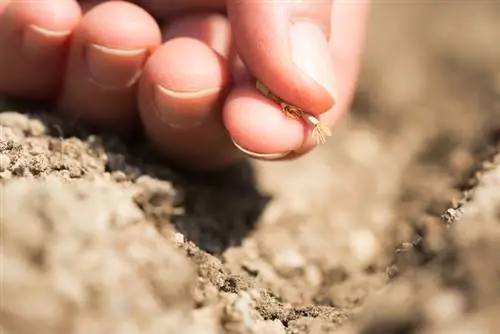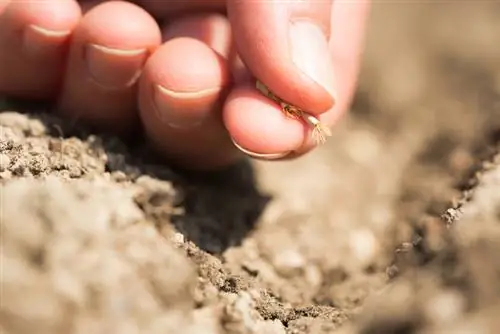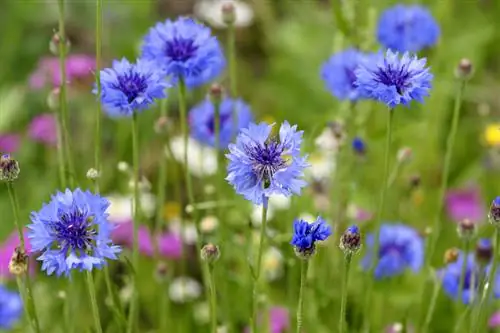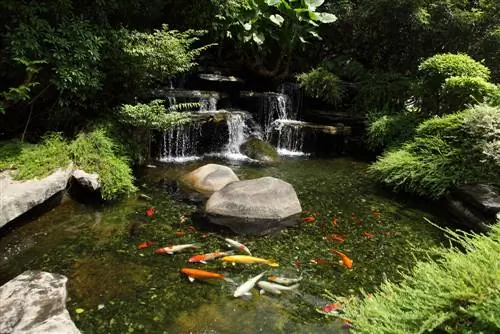- Author admin [email protected].
- Public 2023-12-16 16:46.
- Last modified 2025-01-23 11:20.
The bright blue cornflower was once considered a nuisance weed and was fought against. Since it became rare on roadsides and in fields, it has become increasingly popular as an attractive ornamental plant in our gardens. Sowing the plant is so uncomplicated that you can hardly find pre-grown plants in garden centers. With our gardening tips, you too can be guaranteed to enjoy a beautiful sea of cornflower blossoms.

How to sow cornflowers in the garden or in the house?
Cornflowers are easy to sow, either indoors from March on the windowsill in seed trays with potting soil or directly into the flower bed from mid-April. Cover the seeds thinly with soil, water carefully and ensure a bright location without direct sunlight.
Sowing in the house
You can start growing the cornflowers on the windowsill as early as March.
- Fill seed trays or growing pots with growing soil.
- Spread seeds on top and cover thinly with soil (dark germinator).
- Wet with a sprayer but do not completely soak.
- Place the cultivation container with a hood or a transparent plastic bag (€32.00 on Amazon) over it.
- Place in a warm, bright place out of direct sunlight.
- Air daily to prevent the formation of mold and rot.
The cornflowers germinate quite quickly and reliably. As soon as the second pair of leaves appears, it is recommended to separate the small seedlings. Each plant now has its own pot. The foil cover is now no longer necessary. As before, the substrate is kept moist, but not too wet.
By the time the ice saints arrive, the cornflowers have developed into strong plants and can be transplanted to their final place in the perennial bed as soon as there is no longer any threat of night frost.
Sowing directly into the flowerbed
You can sow the cornflower directly in the flower bed from mid-April.
- Chop the soil thoroughly, remove all root and weed residues and incorporate some compost.
- Smooth the substrate with a rake.
- Draw grooves and scatter the seeds into them.
- Cover thinly with soil.
- Water carefully with a very soft stream so that the seeds are not washed out.
Tip
It doesn't always have to be the expensive cultivation trays. Old yoghurt pots with a small hole in the bottom to drain water are also suitable. Place a few small pebbles on top so that the drain doesn't get blocked and then fill in the potting soil.






